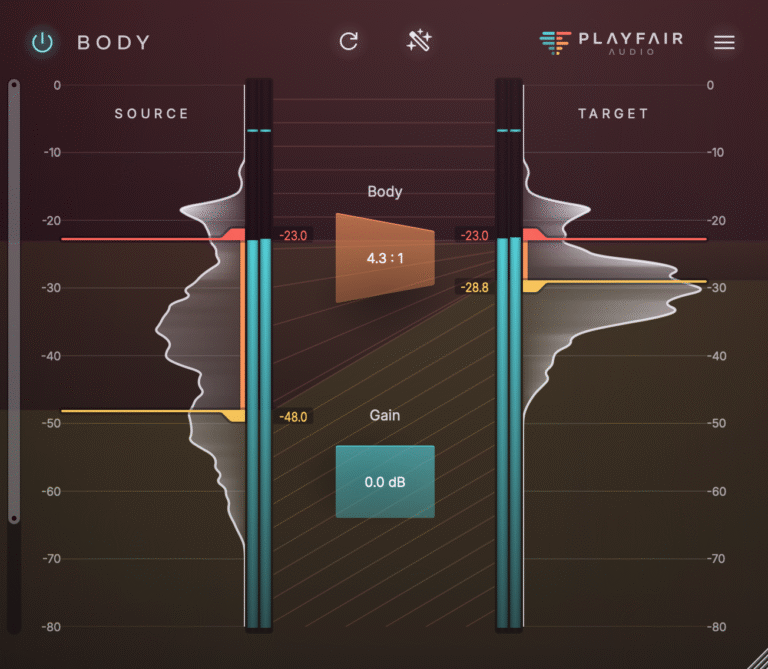There’s something deeply satisfying about a mix that hits with a bit more weight. When the kick thumps, the snare cracks, and the whole thing moves with purpose. That sense of punch is what gives a track presence, even before you touch loudness or stereo width.
For years, compression has been the go-to tool for adding that kind of impact. It can work, but only up to a point. It’s not always the most precise way to get there, and sometimes it creates more problems than it solves. As tools evolved, many mixers started looking elsewhere, and that’s where transient designers entered the picture. They offered more direct control, but again, not always with the results you want.
Here’s how we used to do it, where it often falls short, and why we took a different approach with Dynamic Grading.
Compression as a Blunt Instrument
The classic trick for adding punch with a compressor involves a slow-ish attack and fast release. The idea is to let the transient through before clamping down on the rest, giving you a short burst of energy and perceived snap.
Sometimes it works. But it often pulls the entire signal around with it. The compressor doesn’t just deal with transients. It responds to whatever crosses the threshold, whether that’s a peak, or something else entirely. You’re not shaping transients as much as you’re riding gain.
This is especially problematic when applying compression on a mix bus. The settings that make one element punchier might completely flatten another. A snare might benefit, but overheads start pumping. A kick might sound tighter, but the low end ends up lopsided. You go back and tweak the threshold, the ratio, the release — then start second-guessing the whole idea.
On individual tracks, you have more room to get it right, but even there, you’re still shaping everything through one set of controls.
The Rise of Transient Designers
As compressors showed their limitations, transient designers arrived to offer a more focused alternative. Instead of compressing based on thresholds, they let you adjust the attack and sustain of a sound separately. Want more crack on a snare? Increase attack. Want less boom in a kick? Reduce sustain.
For drums in particular, this felt like a breakthrough. It was easier to isolate the quality you wanted to change and adjust it without dragging everything else with it.
But transient designers have their own blind spots. They often treat every hit the same way, regardless of the performance dynamics. A quiet ghost note gets the same treatment as a full-on rimshot. There’s no awareness of context, no ability to differentiate intensity. And because many are operating behind a minimal interface, it’s not always clear what’s really being altered.
In other words, they’re good for broad strokes, but not always for nuance.
What We Wanted Instead
We didn’t want a more complicated compressor, and we didn’t want another transient plugin that only works in specific situations. What we really wanted was a way to shape punch and presence based on how a performance behaves dynamically — not just how loud it is, and not just when a threshold is crossed.
That’s exactly why we built Dynamic Grading.
It analyses the signal and maps it to a histogram based on intensity. Instead of reacting in real time to every peak and valley, it gives you a full picture of the dynamic content. You can then adjust how the quietest, mid-level and loudest portions of the sound behave, all independently.
Adding Punch with More Precision
Let’s say you’re mixing a snare. The performance is decent, but the hits aren’t consistent. A standard compressor might pull down the loudest hits and ignore the rest. A transient designer might boost all the attacks evenly, exaggerating the performance in ways that feel unnatural.
With Dynamic Grading, you can give just the stronger hits a little more bite while letting the softer hits stay untouched. Or you can tame the louder ones slightly and push up the mid-range hits, so the whole thing feels more balanced and forward without sounding artificial.
It works just as well on a drum bus. You can add urgency to the top end of the dynamic range — those kick and snare transients — while leaving the ambience and cymbals alone. Or you can focus on the body of the drums, giving them more presence without triggering harshness.
And because you’re seeing the dynamic content as you work, you’re not guessing.
More Control, Less Compromise
Punch is about contrast. It’s about having just enough space between the transient and the body of the sound to let things feel alive. Too much compression and that contrast disappears. Too much transient shaping and it starts to sound cartoonish.
Dynamic Grading sits in the middle. It gives you the ability to add punch where it matters, without compromising tone or feel. You can shape dynamics with far more precision than traditional compression, and more musical intent than a transient designer.
No second-guessing. No unintended side effects. Just more control over what your mix actually feels like.
Image credit: Caught In Joy on Unsplash
